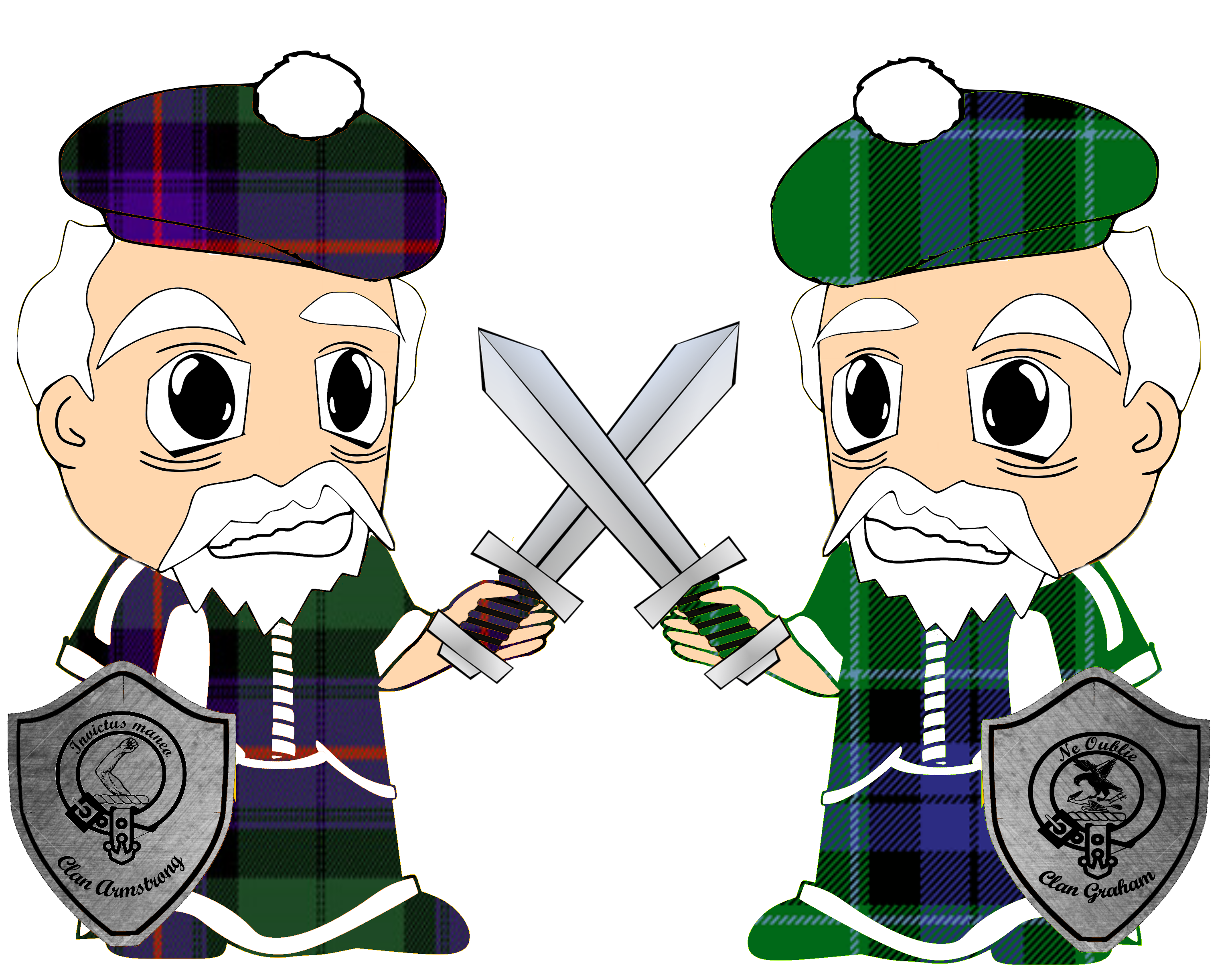Clan Armstrong vs. Clan Graham
 In 1530 Scottish King James the V, after having trouble with the Armstrong Clan, began to push them off their traditional lands in Gilnockie. The Armstrongs exiled themselves to nearby already over-crowded lands controlled by the powerful Graham Clan. This displacement of the Armstrong’s onto Graham property began to cause tensions between the two families. On May 29th 1541 a group of clansmen from Clan Graham led by Lang Will Graham and believed to consist of more than 50 men, surrounded and murdered three Armstrong brothers. A week later Lang Graham arrived at a day of truce organized by the Scottish West March Warden, Lord Maxwell. Lord Maxwell requested that the Graham’s make amends for their attack on Armstrong Clansmen, they refused and were embolden to begin a series of further raids in the Scottish West March. These raids took place through the summer of that year with the Graham’s terrorizing villages and farms along the Scottish boarder. On July 26th, 1530 The Houses of Krikhill, Whisgillis and Stanegill belonging to the Armstrong’s were attacked by the Grahams and burned to the ground. On the 2nd of September of the same year, the Armstrong’s and other victims of the Grahams raids, through, Lord Maxwell, made an appeal to the Scottish and English Crown’s for help but these requests went unanswered.
In 1530 Scottish King James the V, after having trouble with the Armstrong Clan, began to push them off their traditional lands in Gilnockie. The Armstrongs exiled themselves to nearby already over-crowded lands controlled by the powerful Graham Clan. This displacement of the Armstrong’s onto Graham property began to cause tensions between the two families. On May 29th 1541 a group of clansmen from Clan Graham led by Lang Will Graham and believed to consist of more than 50 men, surrounded and murdered three Armstrong brothers. A week later Lang Graham arrived at a day of truce organized by the Scottish West March Warden, Lord Maxwell. Lord Maxwell requested that the Graham’s make amends for their attack on Armstrong Clansmen, they refused and were embolden to begin a series of further raids in the Scottish West March. These raids took place through the summer of that year with the Graham’s terrorizing villages and farms along the Scottish boarder. On July 26th, 1530 The Houses of Krikhill, Whisgillis and Stanegill belonging to the Armstrong’s were attacked by the Grahams and burned to the ground. On the 2nd of September of the same year, the Armstrong’s and other victims of the Grahams raids, through, Lord Maxwell, made an appeal to the Scottish and English Crown’s for help but these requests went unanswered.
The Armstrong’s and the Grahams finally met in battle in the fall of 1530, this was a great clash between the two clans featuring the full fighting force of both. These clans met on the bank of the Esk river near Gilnockie Tower. According to accounts, the battle was prolonged and bloody with great numbers on both sides being slain. The Armstrong’s were eventually victorious driving the Grahams to Eskdale and over the boarder into Cumberland, England.
This defeat did not stop or slow down the Graham raids as they resumed their attacks on Liddesdale, killing one of the clan leaders, Andro Armstrong, in the process, again the Armstrong’s appealed to the crown looking for retribution. After receiving none the Armstrong’s took matters into their own hands and killed Authur Grame who was not only a Graham but lived on the south side of the boarder and was considered an Englishman. Once word got to the English Crown that an Englishman was killed in this feud, King Henry was reportedly furious. Even after the Scottish King James V attempted to placate him, he decided to come to Liddesdale in person with the intent on punishing the Armstrongs. This action led to the Armstrong’s holding a grudge against the Scottish Crown for not stepping in and protecting them when they were outlawed by the English Crown. in 1542 when the English moved into Scottish territory at Solway Mass, the Armstrongs refused to come to the aid of the Scottish troops and removed themselves from the fight and Scotland had to relinquish land to the English.
After the English victory in the boarder lands many of the Graham’s and Armstrongs were forced to swear allegiance to the English Crown. The two clans burried the hatchet and cemented a bond through intermarriage. George Graham of Fauld’s daughter married the Armstrong chief’s son, Christopher of Barngleish. Along with several other marriages between the two families they were now united and there were very few disputes between the two clans after the mid sixteenth century.